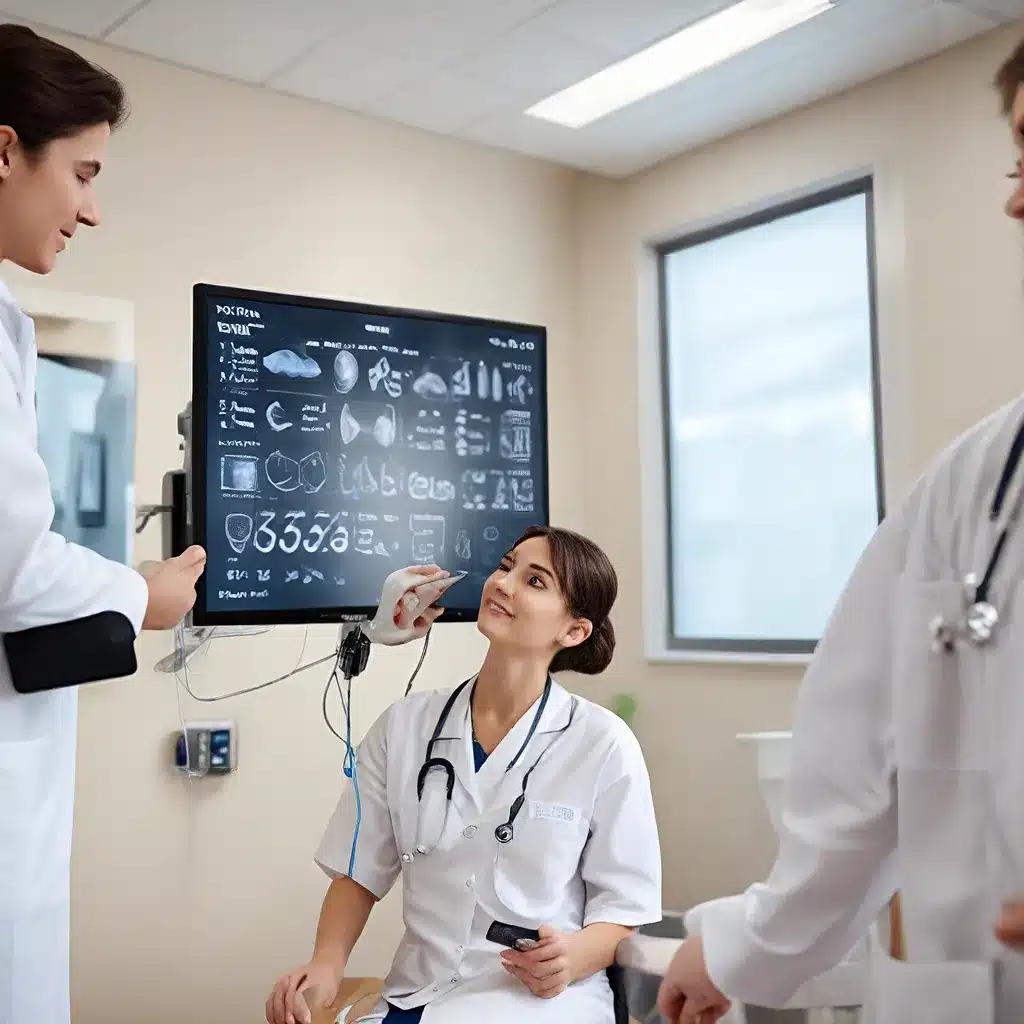
In the rapidly evolving landscape of healthcare, the integration of sensor network technologies and the Internet of Things (IoT) is revolutionizing the way we approach patient care. These advancements are paving the way for the creation of smart environments that prioritize the well-being and comfort of patients, while also streamlining operational efficiency and enhancing the overall healthcare experience.
Transforming Patient Care with Sensor Networks
At the heart of this transformation are sensor networks, which provide a versatile and interconnected platform for gathering and analyzing critical data. By strategically deploying a range of sensors throughout healthcare facilities, patient monitoring and data collection become seamless and comprehensive.
These sensor networks can be leveraged to track patient vital signs, monitor environmental conditions, and even detect potential safety hazards. The real-time data gathered from these sensors can then be seamlessly integrated into electronic health records (EHRs), allowing healthcare professionals to make more informed decisions and deliver personalized care.
One of the key advantages of sensor-driven healthcare solutions is the ability to proactively identify potential issues and intervene before they escalate. For example, sensors can detect changes in a patient’s respiratory patterns or detect falls, triggering immediate alerts to nursing staff. This rapid response can be instrumental in preventing adverse events and improving patient outcomes.
Moreover, sensor networks can enhance the overall patient experience by optimizing the physical environment. Sensors can monitor temperature, lighting, and humidity levels, ensuring that patient rooms are comfortable and conducive to healing. This level of environmental control can have a significant impact on patient satisfaction and recovery rates.
Harnessing the Power of IoT in Healthcare
The integration of IoT technologies further amplifies the capabilities of sensor networks in healthcare settings. By connecting various medical devices, sensors, and systems through a unified network, healthcare providers can access a wealth of real-time data and insights.
This interconnectivity enables remote patient monitoring, allowing healthcare professionals to track and respond to patient health indicators from anywhere. Patients can be equipped with wearable devices or in-home sensors that continuously transmit data, empowering them to take a more active role in their own care and enabling early intervention when necessary.
IoT-enabled smart beds and intelligent medical equipment can also enhance patient comfort and safety. These devices can automatically adjust settings based on patient needs, such as adjusting the bed’s position or automatically activating the nurse call system in case of an emergency.
Addressing Security Challenges in Sensor-Driven Healthcare
As the adoption of sensor networks and IoT technologies in healthcare continues to grow, the importance of cybersecurity becomes increasingly critical. Healthcare organizations must be proactive in addressing the unique security challenges that arise in these interconnected environments.
One of the primary concerns is the potential for data breaches, as sensitive patient information is transmitted and stored across the network. To mitigate this risk, healthcare providers must implement robust encryption protocols, strong access controls, and comprehensive vulnerability management strategies.
Additionally, the integration of medical devices and sensors introduces new attack surfaces that must be secured. Regularly updating firmware, implementing strong authentication methods, and establishing clear device management policies are crucial steps in maintaining the integrity of the healthcare ecosystem.
Optimizing Energy Efficiency in Smart Healthcare Environments
As the deployment of sensor networks and IoT technologies in healthcare expands, the need for energy-efficient solutions becomes increasingly important. Healthcare facilities are typically energy-intensive, with a significant portion of their power consumption attributed to medical equipment, lighting, and climate control systems.
By leveraging smart energy management technologies, healthcare organizations can optimize their energy usage and reduce their carbon footprint. This can be achieved through the implementation of predictive analytics, which can forecast energy demands and dynamically adjust system settings accordingly.
Moreover, the use of low-power sensor nodes and energy-harvesting techniques can further enhance the sustainability of sensor-driven healthcare solutions. By harnessing ambient energy sources, such as solar or thermal energy, these systems can operate with minimal reliance on traditional power sources, contributing to the overall environmental sustainability of healthcare facilities.
Embracing the Future of Sensor-Driven Healthcare
As the healthcare industry continues to evolve, the integration of sensor networks and IoT technologies will play a pivotal role in enhancing patient experience, improving clinical outcomes, and driving operational efficiency. By embracing these advancements, healthcare providers can create smart environments that prioritize patient well-being, foster personalized care, and pave the way for a more sustainable and resilient healthcare system.
To explore the latest developments in sensor network technologies and their applications in healthcare, we invite you to visit sensor-networks.org, a leading resource for professionals, researchers, and enthusiasts in the field of sensor networks and IoT.